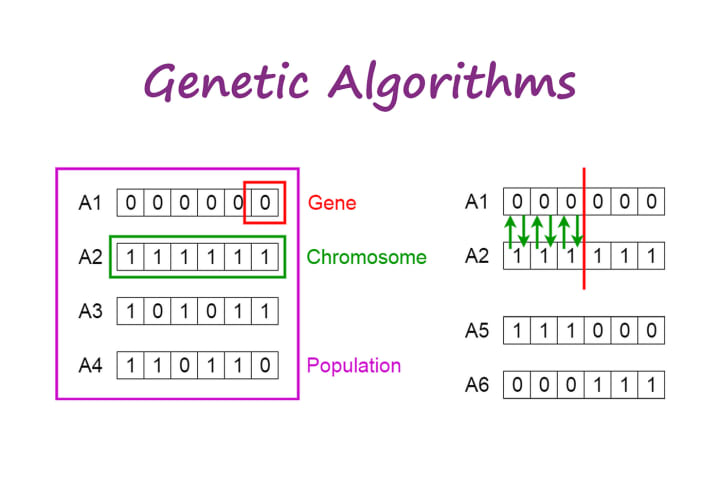How is AI transforming your BIM workflow?
The Future of BIM: How AI is Revolutionizing

Artificial intelligence (AI) technology integration has transformed almost every industry in recent years. BIM is also not left untouched. When combined with AI capabilities, BIM, a digital depiction of a building's functional and physical qualities, has significantly enhanced the client experience. We'll examine how AI is enhancing the BIM process for AEC projects in this post.

Automated Design Optimization
AI-BIM enhances design and planning processes by making intelligent design recommendations based on project requirements and previous data records. Also, that’s not all; we now have software solutions that could be termed text-to-architecture models for your AEC requirements. With tools like Hypar coming in, you can just prompt the system to generate geometrical outputs. And on the other hand, architects have already started utilizing text-to-image models like midjourney to start with their conceptual design journey.

AI-powered algorithms
The whole concept of artificial intelligence is based on the fact that, when trained on large datasets, machines can make better decisions than humans. AI-powered algorithms can provide the very same leverage to our architectural design process. Considering any context, with enough data, AI-suggestive can power you to design methodologies with intelligence, and hence, outputs could be more well-versed with the context. Basically, it can come up as one of the ways to test and analyze your design outcomes. Following are the different ways AI-powered algorithms can help in predictive analysis for your architectural requirements.

Genetic algorithms: Genetic algorithms analyze solutions for fitness based on established criteria, such as decreasing material use and preserving structural integrity. The best-performing designs are selected for further refining.

OptiStruct by Altair: OptiStruct is a widely used software for structural analysis and optimization. It incorporates genetic algorithms and other optimization techniques to find the best design solutions while considering constraints such as material usage and structural stability.

Finite Element Analysis (FEA) with Machine Learning: FEA is a numerical approach for analyzing complicated structures. Machine learning may enhance FEA models by learning from prior simulation results and creating predictive models.

Reinforcement Learning algorithms: Reinforcement Learning algorithms may be used to improve the structural design process by teaching an agent to make decisions that result in desired results. In this case, the agent may learn to choose design parameters or compare multiple design possibilities based on the benefits or penalties associated with characteristics like material utilization, stability, or performance.
OpenMDAO: OpenMDAO (Open-source Multidisciplinary Design Analysis and Optimization) is an open-source framework for conducting multidisciplinary optimization. It allows users to integrate various analysis tools, including FEA, and optimization algorithms such as genetic algorithms and reinforcement learning.
AI-oriented crash detection and risk mitigation

AI algorithms in BIM models can detect conflicts between construction elements like plumbing, electrical systems, and structural components early in the design process. This results in higher construction quality and less rework, and it may recommend alternative design options. Let us discuss in detail the ways AI can transform clash detection and risk mitigation.

Rule-Based Detection: It uses predetermined rules and guidelines that include industry standards, construction codes, and project-specific criteria. The algorithms examine the digital models and identify possible conflicts, allowing construction teams to fix issues before they become costly during development.

Machine Learning Advancements: It improved the accuracy and efficiency of conflict detection in the project. By training AI algorithms on enormous datasets of conflict-free and clash-prone models, the system can discern patterns and correlations between elements, gradually enhancing its clash detection skills. Machine learning models are constantly improving their detection skills by integrating feedback from dispute resolution attempts and continuing building activity.
Automated Clash Resolution: It not only detects confrontations but also recommends automated resolution solutions. These solutions might include automatically altering clash-prone parts or creating alternate design choices that prevent conflicts while satisfying project requirements. This simplifies the dispute resolution procedure, saving time and eliminating the need for manual involvement.

There are tools available that incorporate AI algorithms, rule-based detection, machine learning advancements, and automated clash resolution functionalities for BIM. Here are some examples:
Autodesk Navisworks: Navisworks is a widely used BIM software that enhances clash detection and resolution by integrating with machine learning algorithms to improve accuracy over time.

Solibri Model Checker: Solibri Model Checker is a BIM validation software that uses rule-based clash detection and advanced conflict resolution tools to streamline the process of identifying and resolving conflicts.

BIM Track: BIM Track is a cloud-based platform that streamlines clash detection and resolution workflows in BIM projects, integrates with various authoring tools, and offers automated solutions.

Trimble Tekla Structures: Tekla Structures is a BIM software designed for structural engineering and construction projects, offering clash detection and automated resolution features for efficient conflict resolution.

BIM 360 Coordinate: BIM 360 Coordinate, part of Autodesk's BIM 360 platform, enhances clash detection and coordination through real-time detection, collaboration, and progress tracking through machine learning algorithms.

You Must explore this : BIM 360 design collaboration explained
Predictive analytics and decision support: The remodeling project team used AI-based predictive analytics to optimize construction timelines, efficiently allocate resources, and anticipate potential hazards. By analyzing past data and weather patterns, they identified bottlenecks and streamlined the job sequence, resulting in fewer delays and better resource usage. The AI systems also helped anticipate potential hazards, reducing delays and cost overruns.

There are tools and platforms available that incorporate AI-based predictive analytics and decision-support functionalities for construction projects. Here are some examples:
Oracle Construction and Engineering: Oracle provides construction and engineering solutions with AI-powered predictive analytics, decision support systems, and risk management tools for efficient scheduling, cost allocation, and resource allocation.
Procore: Procore is a cloud-based construction management platform that uses AI-driven analytics to optimize project timelines, resource allocation, and identify potential bottlenecks, enhancing efficiency and mitigating risks.
Bentley Systems: Bentley Systems provides AI-based predictive analytics tools for infrastructure projects, enhancing decision-making and streamlining construction processes by forecasting outcomes, optimizing resource allocation, and identifying potential hazards.

Trimble Prolog: Trimble Prolog is construction project management software with predictive analytics, AI algorithms, and decision support to optimize timelines, resource allocation, and risk management.

IBM Watson Construction: IBM Watson Construction is an AI-powered platform that uses data analysis to forecast project performance, optimize resource allocation, and identify risks, enhancing efficiency and mitigating risks.
Facility management and maintenance AI can use BIM data to optimize facility management and maintenance procedures after construction. By combining BIM with Internet of Things (IoT) devices and sensors, AI algorithms can track building performance, energy usage, and maintenance needs. This enables proactive maintenance planning, early identification of system problems, and optimal resource usage, resulting in lower operational costs and increased occupant comfort.

There are several tools and platforms available that leverage AI, BIM data, and IoT devices for facility management and maintenance optimization. Here are some examples:
IBM Maximo: IBM Maximo is an AI-powered asset management software that uses BIM data and IoT sensors to monitor building performance, predict maintenance needs, and optimize asset utilization.
Autodesk BIM 360 Ops: Autodesk BIM 360 Ops is a cloud-based facility management platform that uses AI algorithms to optimize maintenance, monitor performance, and allocate resources effectively.

Schneider Electric EcoStruxure Building Advisor: Schneider Electric's EcoStruxure Building Advisor utilizes BIM data, IoT devices, and AI for facility management optimization, enhancing real-time monitoring, maintenance identification, and proactive action recommendations.
Facilio: Facilio is a facilities management platform that uses BIM data, IoT devices, and AI algorithms for proactive maintenance planning, real-time monitoring, and resource optimization.

Senseware: Senseware is a smart building platform that uses IoT sensors and AI algorithms for efficient facility management, enabling proactive maintenance planning, cost savings, and improved occupant comfort.

Conclusion
AI has improved the BIM experience for customers by optimizing design, reducing risks, delivering important insights, enabling immersive visualization, and enhancing facility management. With AI as a formidable ally, customers may expect higher productivity, lower costs, and better cooperation throughout the building process. As AI advances, so do the opportunities for using BIM to revolutionize the customer experience in the construction business.
About the Creator
Sophia Andrews
Hello, I am Sophia Andrew , and I work as a BIM Consultant for AEC industry. My work deals with comprehensive BIM solutions.






Comments
There are no comments for this story
Be the first to respond and start the conversation.